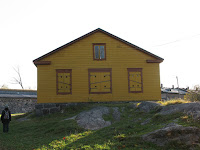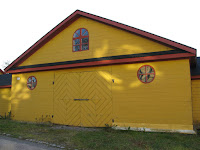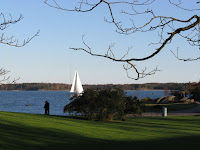(...)
I had fairly high expectations in regards to the visit of Suomenlinna and must say I was not disappointed. Originally named Viapori or Sveaborg the group of six islands is said to have been renamed Suomelinna (which stands for castle of Finland) in 1918 for historic and patriotic reasons.
Strongly influenced by the ideas of Vauban the bastion fortress was designed in 1748 as a protection against the Russian expansionism, despite the fact that the fortress had to surrender to Russia in 1808 during the Finnish War.
We walked under a sort of bastion tunnel to gain access to the inner part of the island where after having walked along beautifully natural wooden protected shore embarcaderos we finally made in into a welcoming centre museum which not only provided us with a fairly amount of interesting historic material but also had a photo exhibit on the plants and shrubbery trees and flowers to be seeen on the islands.


We took our time to stroll around the main island, known as an avant-garde location for culture till we reached the grave of Augustin Ehrensvärd, the military officer, military architect, artist and creator of Suomenlinna. Amazingly as it may sound his grave was designed by King Gustav III of Sweden and was indeed impressive. The armoured sculpture looke alive ... there was something about its eyes that looked very real, I must say.
The colourful houses contrasting with the vibrant green of the grassy pathways we came across are said to be artist's galleries. We were taken by the vista points overlooking the sea and the small rocky beaches along the shores and I don't quite recall if the submarine we photographed, which dated I believe from the Finnish war, had also been adapted to some sort of artistic endeavour, but the truth is that the whole island had an artistic spellbounding touch one is unable to describe ...
Looking at these photos was like going back in time and feeling what we felt then ...
























No comments:
Post a Comment